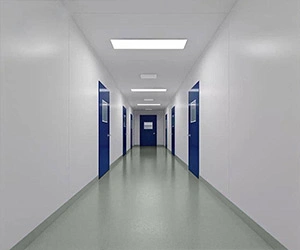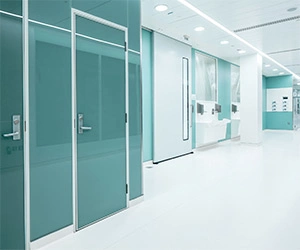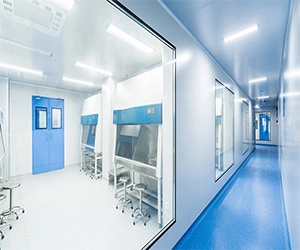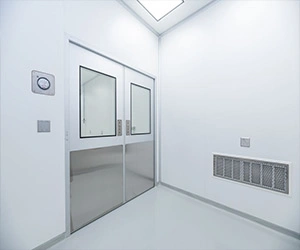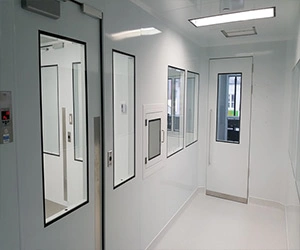- +91-9884528211
Class 10000 Clean Room Design
CLASS 10000 CLEAN ROOM DESIGN
Exploring the Innovations of Class 10,000 Clean Rooms
In the realm of advanced manufacturing and scientific research, the significance of controlled environments cannot be overstated. Among these controlled environments, Class 10,000 clean rooms stand out as a vital component in ensuring precision, quality, and reliability in various industries. This essay delves into the intricacies and innovations associated with Class 10,000 clean rooms, highlighting their importance and applications.

Understanding Class 10,000 Clean Rooms:
Class 10,000 clean rooms are designed to maintain extremely low levels of airborne particles, thus providing a pristine environment for manufacturing, research, and development activities. According to the Federal Standard 209E, a Class 10,000 clean room permits no more than 10,000 particles per cubic foot of air of a specific size range. Such stringent control of particulate contamination is achieved through specialized filtration systems, air handling units, and meticulous cleanliness protocols.
Applications Across Industries:
The versatility of Class 10,000 clean rooms makes them indispensable in various sectors. In semiconductor manufacturing, these clean rooms ensure the fabrication of microelectronic components with minimal defects, thereby enhancing device performance and reliability. Similarly, pharmaceutical companies rely on Class 10,000 clean rooms for the production of sterile drugs, safeguarding public health by preventing contamination. Moreover, industries such as aerospace, biotechnology, and nanotechnology leverage these controlled environments to advance their respective fields.
Innovations Driving Efficiency:
Advancements in clean room technology continually enhance efficiency and efficacy. One such innovation is the development of modular clean room systems, which offer flexibility in design and installation, reducing construction time and cost. Additionally, the integration of advanced monitoring and control systems enables real-time assessment of air quality parameters, ensuring compliance with regulatory standards and optimizing operational performance. Furthermore, the introduction of energy-efficient HVAC (Heating, Ventilation, and Air Conditioning) systems minimizes environmental impact while maintaining optimal cleanliness levels.
Challenges and Future Prospects:
Despite their benefits, Class 10,000 clean rooms present certain challenges, including the need for rigorous maintenance, stringent gowning procedures, and high operating costs. However, ongoing research and development efforts aim to address these challenges through innovations such as self-cleaning surfaces, advanced contamination control technologies, and automation solutions. Looking ahead, the integration of artificial intelligence and machine learning algorithms holds promise for optimizing clean room operations and predictive maintenance, further enhancing productivity and cost-effectiveness.
Class 10,000 clean rooms represent a cornerstone of modern manufacturing and scientific research, providing controlled environments essential for ensuring product quality, reliability, and safety across diverse industries. Through continual innovation and adaptation, these clean rooms remain at the forefront of technological progress, driving advancements in fields ranging from electronics to pharmaceuticals. As we venture into the future, the evolution of clean room technology promises to usher in new possibilities and opportunities for innovation, shaping the landscape of industry and scientific discovery for generations to come.

